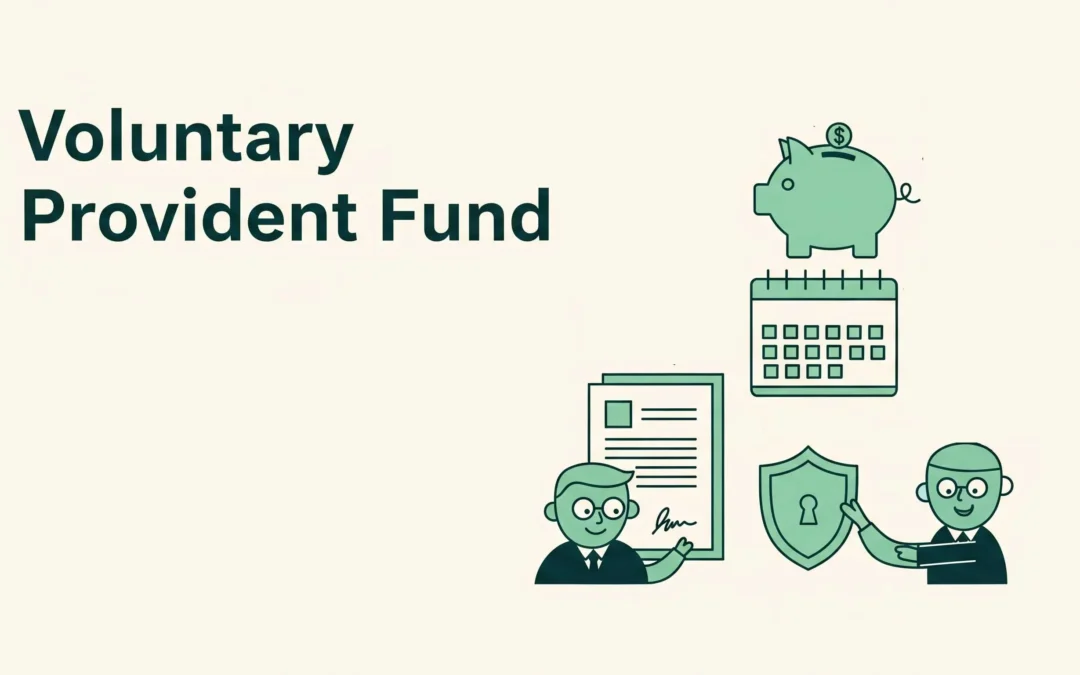Employees have various options available for investment. Provident fund is one of them. However, the Employee Provident Fund is a mandatory investment that they have to make involuntarily. But, VPF gives full freedom to the employees whether they want to opt for it or not. There are various features and benefits attached to it that are of great use.
This article will explain about the voluntary provident fund and whether they are a good option to opt for or not.
What Is Voluntary Provident Fund (VPF)?
An expansion of the Employees’ Provident Fund (EPF) program is the Voluntary Provident Fund. VPF is optional and permits employees to voluntarily contribute more than the statutory limit, whereas EPF contributions are required at 12% of an employee’s base pay and dearness allowance.
- Eligibility: Contributions to VPF can only be made by salaried workers who are also EPF members.
- Employer’s Role: In contrast to EPF, the employer is under no obligation to make any contributions to VPF.
- Interest Rate: The government determines the interest rate every year, and it is the same as the EPF.
Benefits of Investing in VPF
Let us now understand the benefits of VPF:
1. A Secure and Trustworthy Investment Choice
The government supports VPF, which is run by a reliable regulatory agency. For salaried people, this makes it one of the safest investment options. There is no market volatility, in contrast to shares or mutual funds. You can feel secure knowing that you know exactly where your money is going.
2. Tax-Saving Savings
The tax benefit that VPF provides is one of its most attractive features. Contributions are eligible for deduction under Section 80C, and interest earned is tax-free up to an annual contribution limit of ₹2.5 lakh. Subject to this limit, the returns and maturity amount are tax-free, helping you retain more of your earnings both now and in the future.
3. Disciplined and Easy Investing
VPF promotes regular and hassle-free savings because contributions are automatically taken out of your pay cheque. You don’t have to worry about missing deadlines or manually tracking your investment. It’s a set-it-and-forget-it strategy that gradually increases your retirement fund.
4. Over time, guaranteed returns
Because VPF offers fixed returns, the growth of your money over time is predictable. Because of this, it is perfect for those who would rather have stability and certainty than the volatility of market-based instruments. There won’t be any surprises from this fund.
5. Adjustable Amount of Contribution
VPF allows you to contribute more if you so choose, in contrast to EPF, which deducts a set percentage of your salary. This implies that you can raise your monthly contributions in accordance with your long-term objectives and level of financial comfort.
6. Perfect for Long-Term Objectives
Long-term financial objectives like retirement, home ownership, or building a safety net for the future are best served by VPF. Your savings will benefit more from compounding the longer you remain invested.
When Should You Opt for VPF?
Let us see when opting for a VPF is a suitable option:
1. When You Seek a Long-Term, Low-Risk Investment
VPF is an excellent option if stability is more important to you than high-risk, high-reward options. For cautious investors who wish to grow their money without worrying about market volatility, it’s perfect. You can invest with confidence and concentrate on long-term objectives like retirement or home ownership because it is supported by the government.
2. After You’ve Used Up All Other Tax Saving Choices
VPF is a dependable choice to consider if you want to save more beyond your mandatory EPF contributions and have not yet fully utilized the Rs 1.5 lakh annual Section 80C tax deduction limit through other instruments like PPF, life insurance, or ELSS. It helps you maximize your retirement savings with safe, government-backed returns while enjoying tax benefits within the overall Section 80C limit.
3. When You Desire an Easy Investment
Not everyone wants to follow the stock market all the time or actively manage their investments. VPF is intended for people who would rather “set it and forget it.” There is no need for additional paperwork or ongoing oversight because contributions are taken directly out of your pay cheque. It is easy to use, automatic, and reliable, making it ideal for professionals with hectic schedules.
4. When Your Employment and Income Are Consistent
VPF requires a long-term commitment, so having a steady job and a consistent monthly income is ideal. You can make a comfortable contribution without interfering with your other financial priorities if you have a steady income. Now is a great time to start using VPF to build a solid retirement corpus if your career is stable.
5. When You Wish to Create a More Comprehensive Retirement The corpus
If you wish to increase the size of your retirement fund and augment your EPF savings, VPF is especially helpful. Compound growth and steady contributions over time can build up to a substantial tax-free corpus. This can make all the difference if you want to be financially independent later in life or are planning for an early retirement.
Bottomline
The conclusion can be drawn that VPF is a good option for salaried employees to invest. They are given the freedom to opt for it, and it is not at all forced. There are various benefits to it in the long run, and it does not require active management. Once you have set it, the money is deducted automatically. This hassle-free option also offers tax benefits, which increase the net returns.
Employees should analyse their profile and then decide whether it is a suitable option for them or not.


